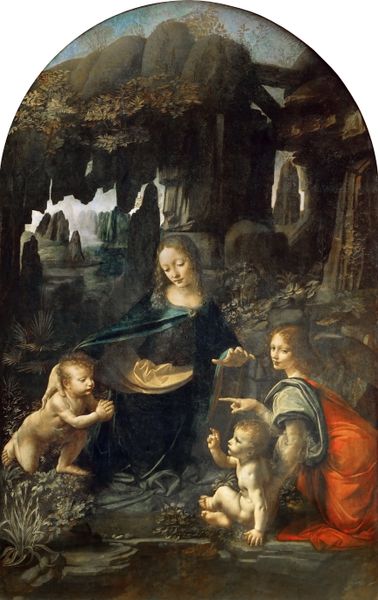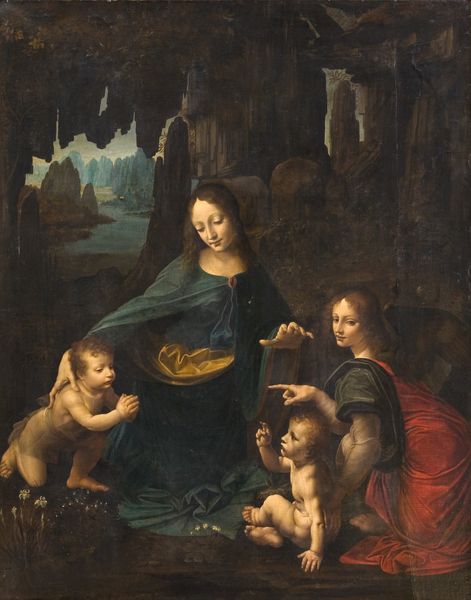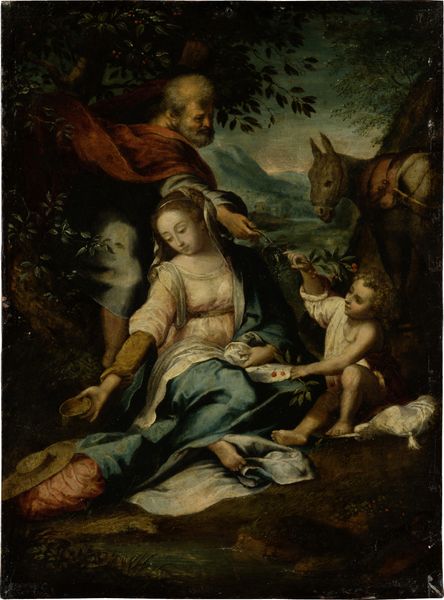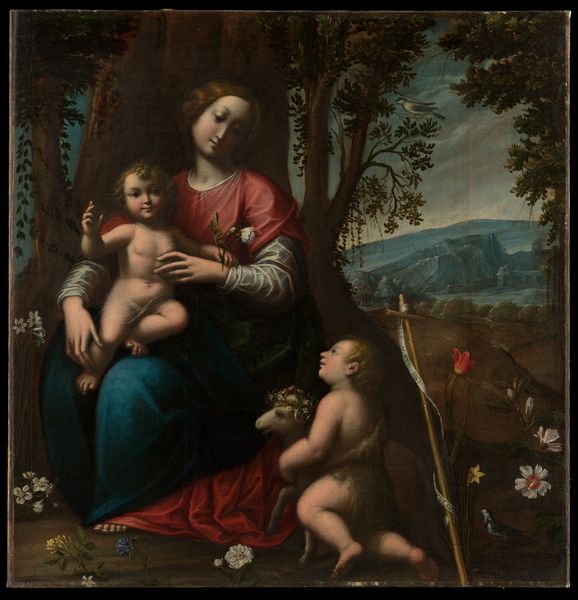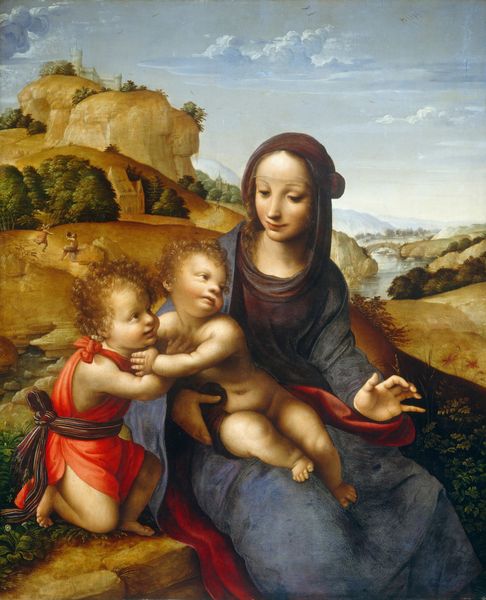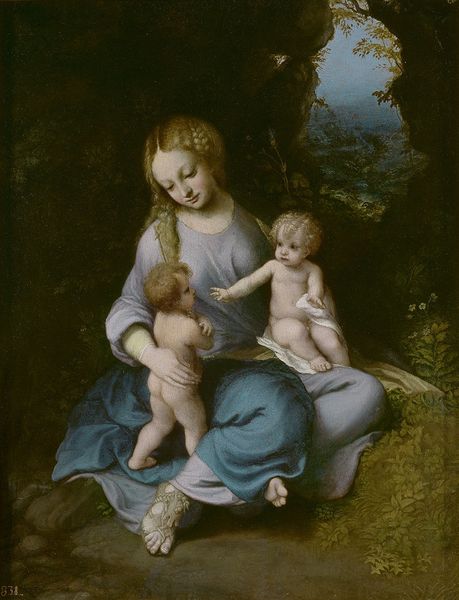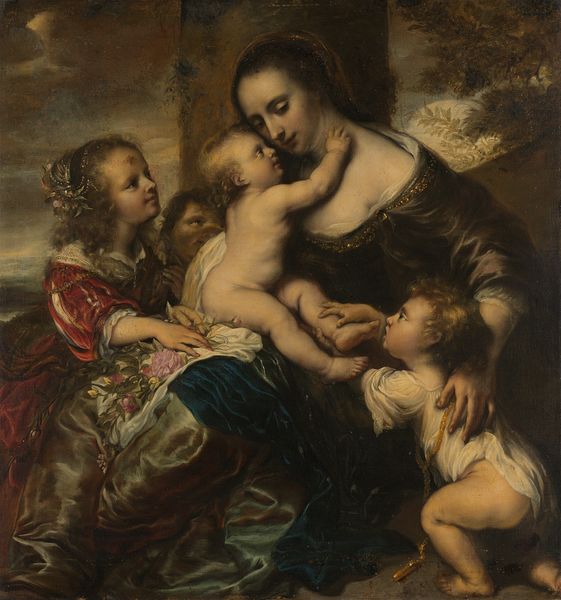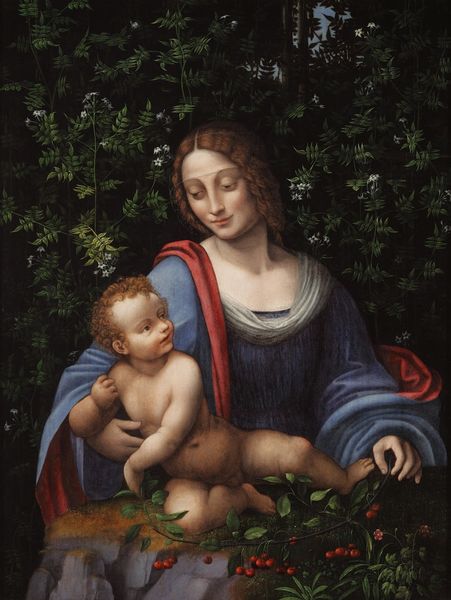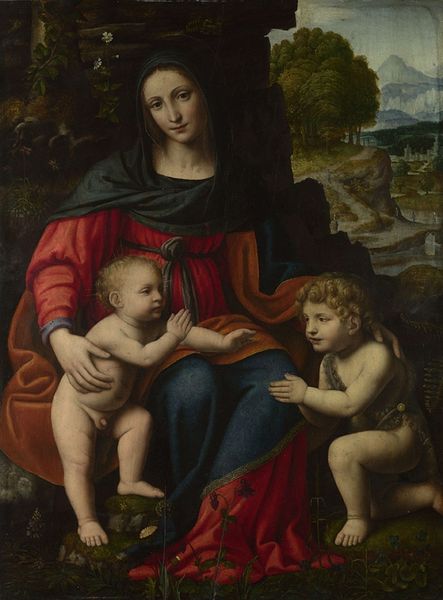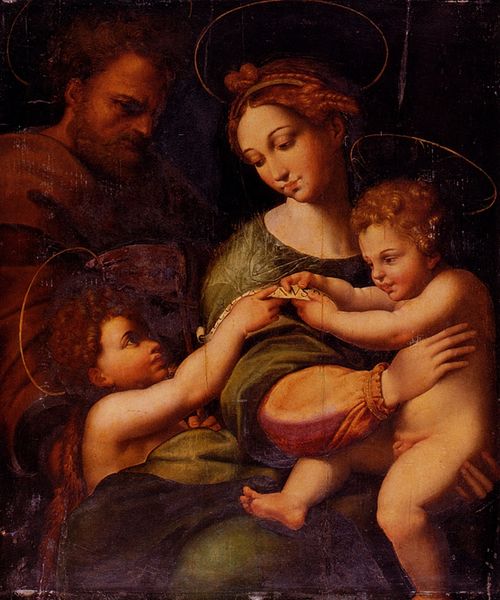
oil-paint
#
portrait
#
high-renaissance
#
oil-paint
#
landscape
#
figuration
#
oil painting
#
christianity
#
history-painting
#
italian-renaissance
#
virgin-mary
#
angel
Dimensions: 189.5 x 120 cm
Copyright: Public domain
Curator: Standing before us is Leonardo da Vinci’s "The Virgin of the Rocks," a remarkable oil painting believed to have been completed around 1505. It’s one of two versions, this one residing here at the National Gallery in London. Editor: My immediate impression is one of mystery. The grotto setting, the diffused light – it lends the scene an almost dreamlike, sacred quality. There’s also something unsettling about the figures' pale faces emerging from the dark background. Curator: It’s a departure from traditional depictions of the Madonna and Child. Da Vinci's choice of a cave, a place often associated with darkness and the earth's womb, could symbolize the mysteries of the incarnation. He’s presenting a divine event within a specific geological context. And there was such huge controversy surrounding it. The Confraternity of the Immaculate Conception, who commissioned it, were not pleased, at least with the initial version of it, leading to decades of dispute about money, about content... Editor: Exactly, the grotto itself feels loaded with meaning. Caves have always been powerful symbols, places of initiation, refuge, and revelation across various cultures. Da Vinci positions the Virgin Mary almost like a goddess in a sacred space. Also, consider the flowers in the foreground - they’re meticulously rendered and must hold symbolic weight. The Madonna lily has strong links with the Virgin but they are so specific in Da Vinci's depiction! Curator: Indeed. This painting originally served as the central panel of an elaborate altarpiece in a church. Imagine how this naturalistic, yet highly symbolic scene, must have been perceived by its audiences within that institutional and ritual setting. The painting itself became entangled in legal battles over payment and ultimately led to the creation of the second version, the one now in the Louvre. So much depended on a patron's approval at this moment in art history. Editor: Absolutely, and knowing that the work was steeped in controversy only heightens my interest in deciphering its symbols. From a psychological point of view, these subtle gestures and gazes elicit the most powerful reactions. Ultimately, Leonardo masterfully plays with light, shadow and symbolism here to give visual expression to a profound theological idea in very new and specific visual language, and its impact really carries to this day. Curator: It is a potent illustration of art's entanglement within social and economic systems of its time. Examining these connections truly enriches our appreciation. Editor: Yes, reflecting on "The Virgin of the Rocks," it's the blending of symbolic language with masterful technique that allows it to resonate even now, five centuries on.
Comments
No comments
Be the first to comment and join the conversation on the ultimate creative platform.
